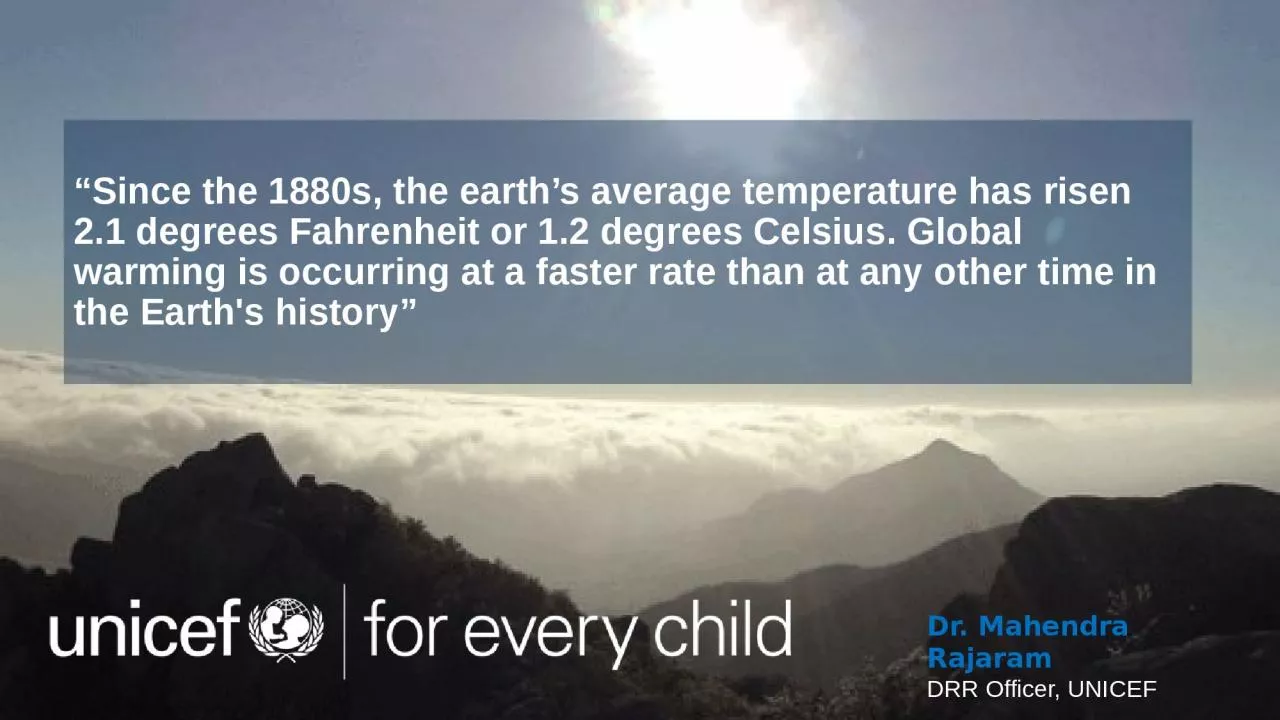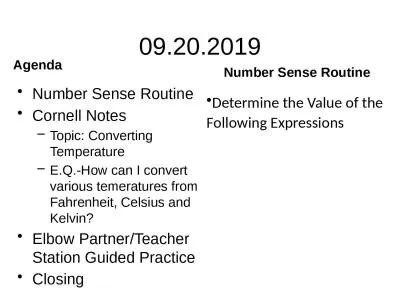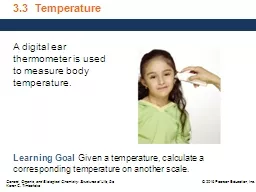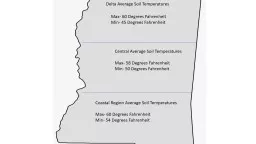PPT-“Since the 1880s, the earth’s average temperature has risen 2.1 degrees Fahrenheit
Author : yvonne | Published Date : 2024-01-29
Dr Mahendra Rajaram DRR Officer UNICEF Children and Women are most affected in any hazard events Shock Earthquake floods Cyclones or Stress civil conflict drought
Presentation Embed Code
Download Presentation
Download Presentation The PPT/PDF document "“Since the 1880s, the earth’s averag..." is the property of its rightful owner. Permission is granted to download and print the materials on this website for personal, non-commercial use only, and to display it on your personal computer provided you do not modify the materials and that you retain all copyright notices contained in the materials. By downloading content from our website, you accept the terms of this agreement.
“Since the 1880s, the earth’s average temperature has risen 2.1 degrees Fahrenheit: Transcript
Download Rules Of Document
"“Since the 1880s, the earth’s average temperature has risen 2.1 degrees Fahrenheit"The content belongs to its owner. You may download and print it for personal use, without modification, and keep all copyright notices. By downloading, you agree to these terms.
Related Documents














